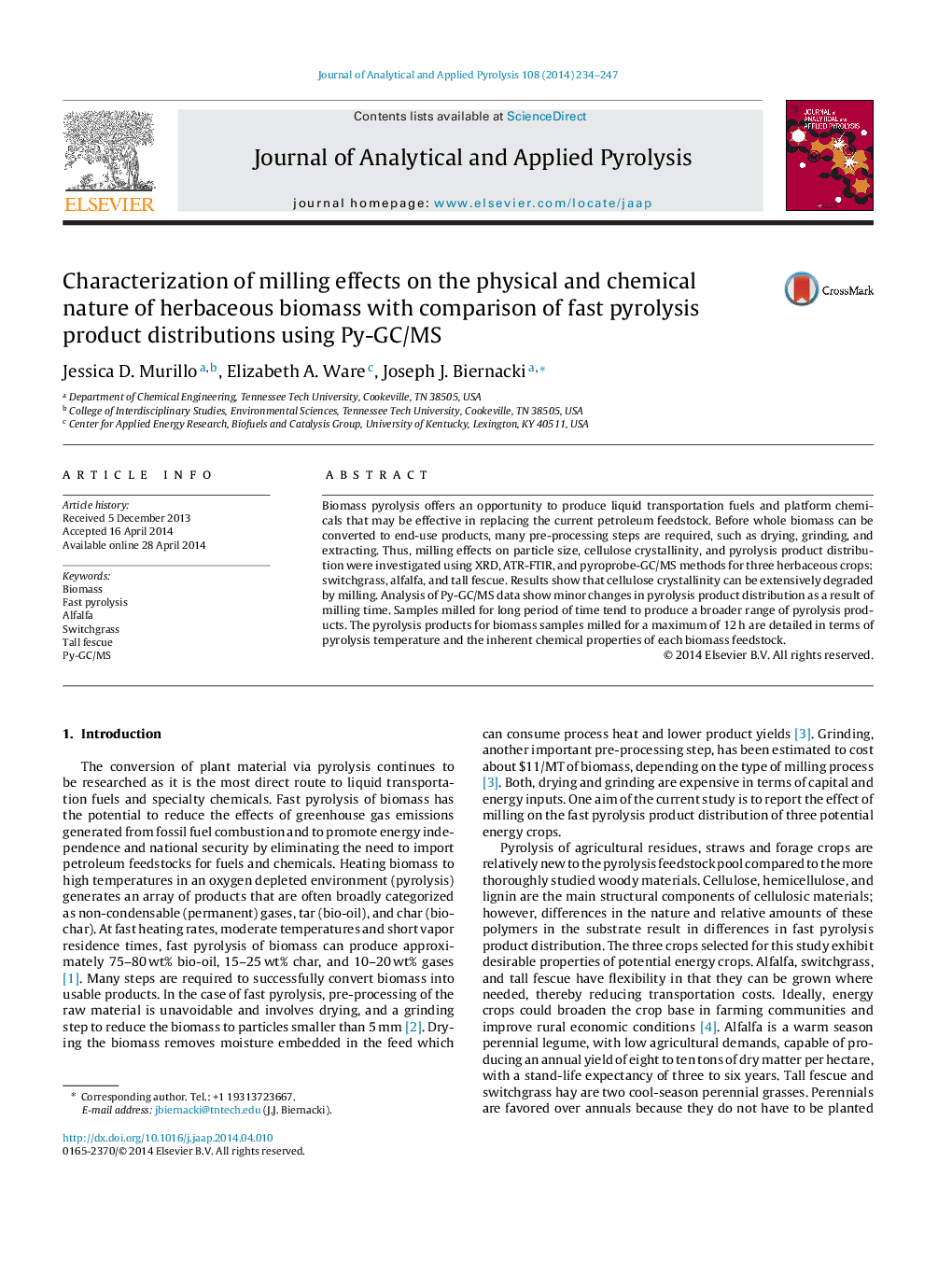| Article ID | Journal | Published Year | Pages | File Type |
|---|---|---|---|---|
| 1196681 | Journal of Analytical and Applied Pyrolysis | 2014 | 14 Pages |
•The type and distribution of products formed from herbaceous biomass are a function of milling time.•In general a larger number of products were identifiable as milling time increased.•A unique way to compare product distributions using Venn diagram is introduced.•The combined effect of temperature and milling time is discussed.
Biomass pyrolysis offers an opportunity to produce liquid transportation fuels and platform chemicals that may be effective in replacing the current petroleum feedstock. Before whole biomass can be converted to end-use products, many pre-processing steps are required, such as drying, grinding, and extracting. Thus, milling effects on particle size, cellulose crystallinity, and pyrolysis product distribution were investigated using XRD, ATR-FTIR, and pyroprobe-GC/MS methods for three herbaceous crops: switchgrass, alfalfa, and tall fescue. Results show that cellulose crystallinity can be extensively degraded by milling. Analysis of Py-GC/MS data show minor changes in pyrolysis product distribution as a result of milling time. Samples milled for long period of time tend to produce a broader range of pyrolysis products. The pyrolysis products for biomass samples milled for a maximum of 12 h are detailed in terms of pyrolysis temperature and the inherent chemical properties of each biomass feedstock.
